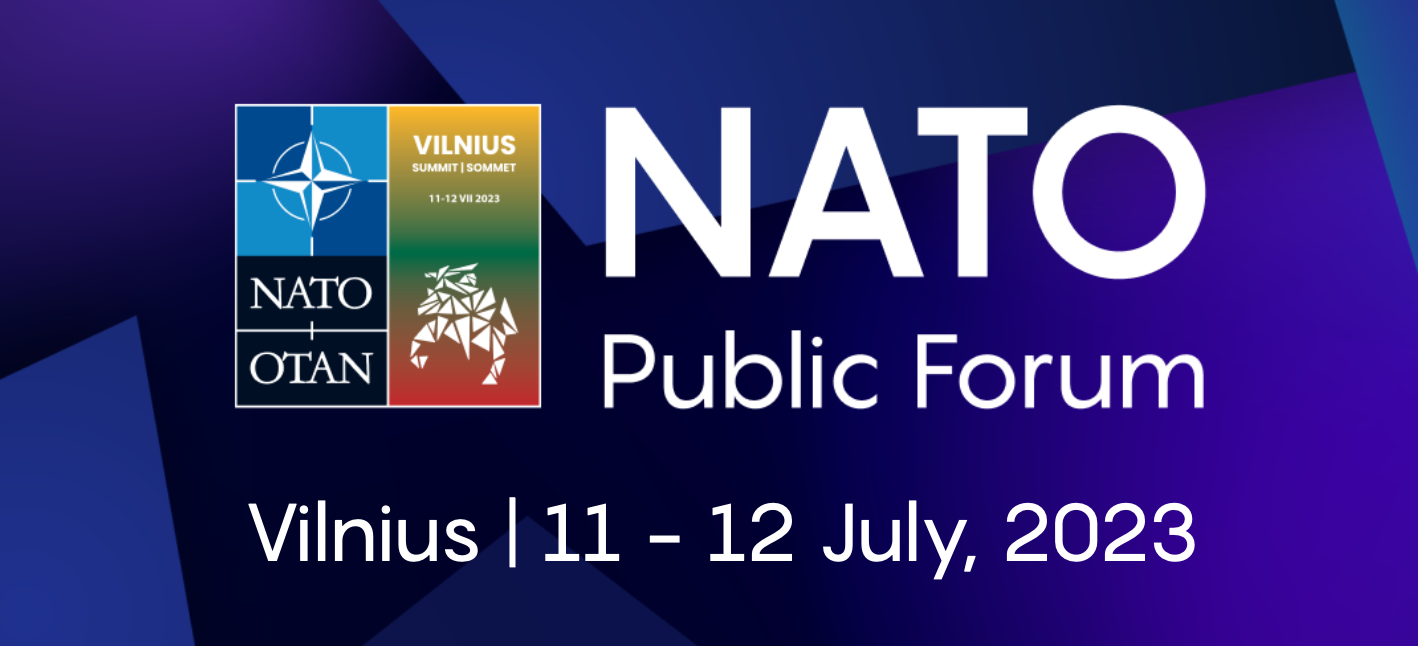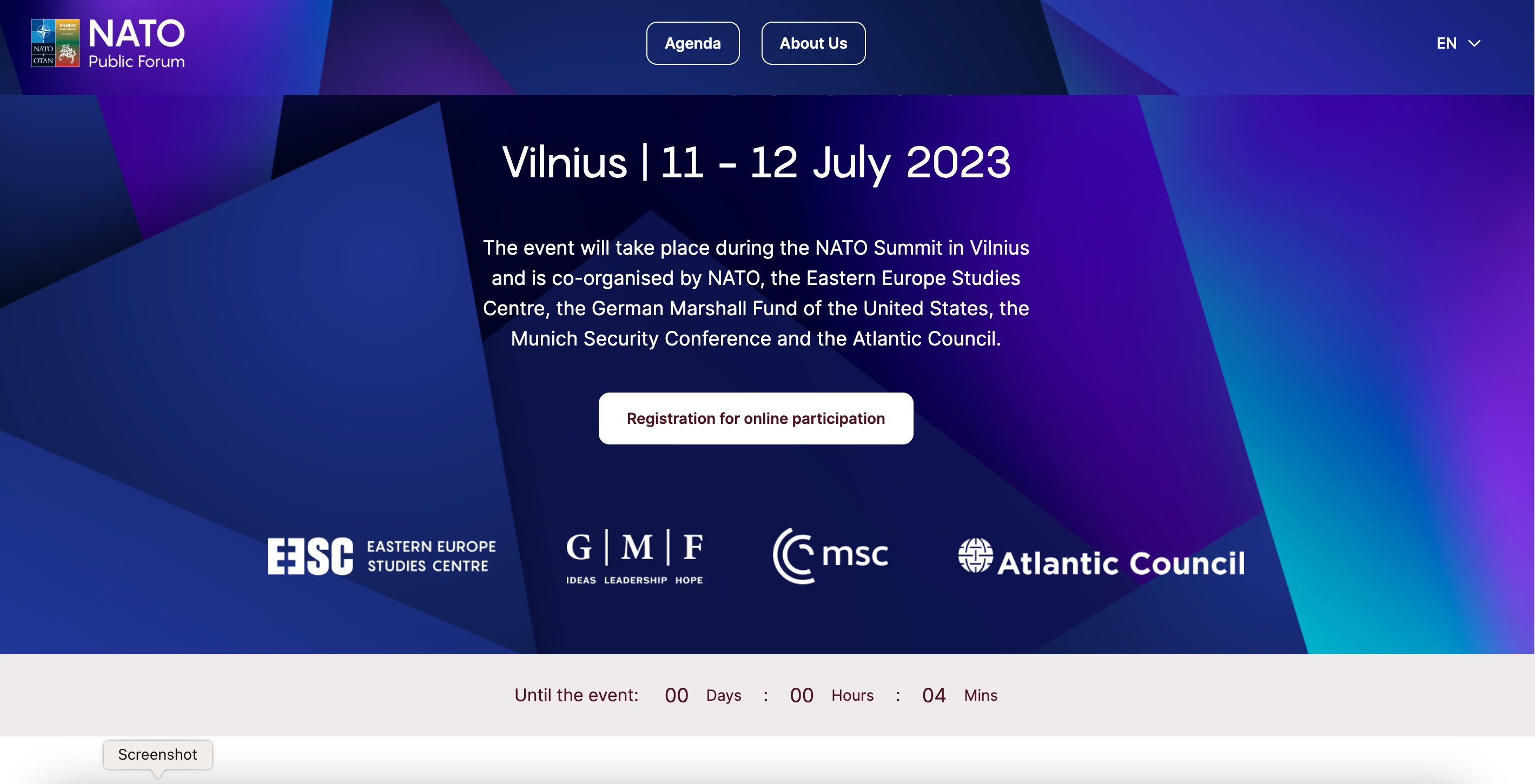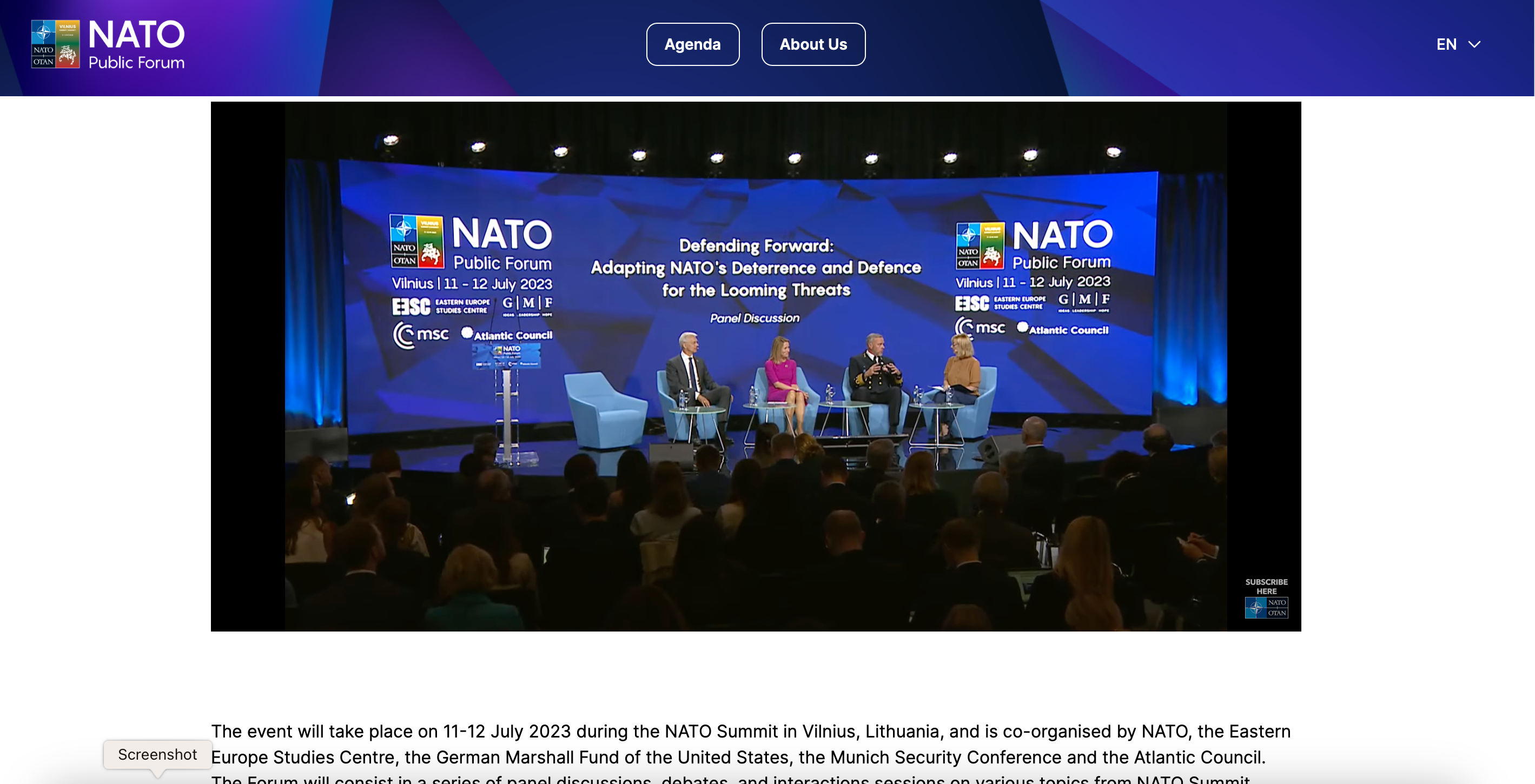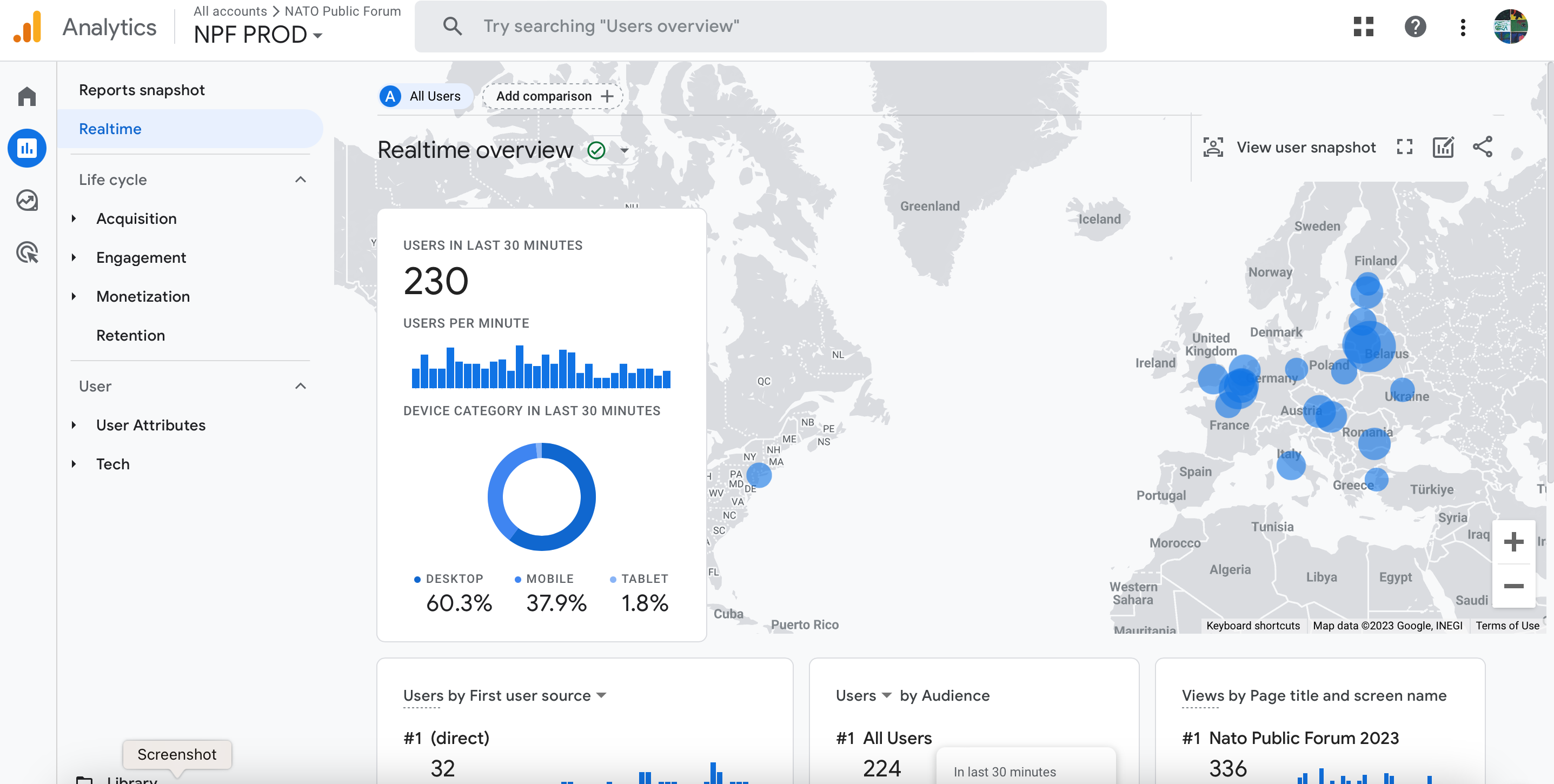The website for Nato Public Forum
About the NATO Public Forum in Vilnius, on 11 – 12 July, 2023
GPYR was entrusted with the pivotal task of crafting a website for a prestigious event held during the NATO Summit in Vilnius, in 2023. Co-organized by NATO, the Eastern Europe Studies Centre, the German Marshall Fund of the United States, and the Munich Security Conference, this event demanded unparalleled excellence in design, functionality, and security.
Focus on Design and User Experience (UX/UI)
We understood, that focusing on simple but unforgettable design with a strong emphasis on UX/UI is crucial for an event of this caliber for several reasons:
1. The NATO Public Forum website served as the digital face of the event. It was often the first point of contact for attendees and media outlets. A visually captivating design leaved a lasting impression and set the tone for the event’s prestige.
2. With a high-profile audience, it was essential to ensure that the website’s design resonated with attendees and encouraged engagement. Intuitive navigation and seamless user experience made it easier for visitors to find information, register for the event, and explore relevant content, ultimately enhancing their overall experience.
3. The design of the website reflected the brand image not only of the event itself but also of the organizations involved, including NATO, the Eastern Europe Studies Centre, the German Marshall Fund of the United States, and the Munich Security Conference. A well-crafted design communicated credibility, trustworthiness, openness aligning with the nature of the event and the reputations of the organizations behind it.
4. Clear and intuitive design enhanced communication by effectively conveying important information about the event, such as agenda, online participation, broadcast recordings. This helped attendees plan their participation more efficiently.
NATO Public Forum website programming: to ensure optimal performance and user experience
Developing the backend infrastructure of this website, implementing functionalities and emphasising on the importance of web security during the event was paramount.
1. The backend infrastructure formed the foundation of the website, encompassing servers, databases, and application logic. Our teams’ meticulous attention to detail was essential to ensure that the backend architecture is robust, scalable, and secure.
2.Dynamic content played a crucial role in maintaining the website’s freshness, engagement, and relevance to visitors, particularly given the frequent changes in information. This was especially true because the final program was uncertain, with numerous officials and high-profile attendees confirming their participation at the last moment due to security reasons.
3. Website performance was optimized through efficient backend programming techniques. Scalability was addressed by designing the backend infrastructure to handle increasing levels of traffic and data without compromising performance. Load balancing, horizontal scaling, and cloud-based solutions were employed to ensure that the website remained responsive and accessible even during periods of high demand, such as peak registration times or live streaming sessions.
Prioritizing web security and support
Security measures were implemented to safeguard the website and its users from potential threats, such as cyber attacks, data breaches, and unauthorised access.
1. Advanced security protocols and encryption techniques were employed to protect sensitive data, including personal information of attendees.
2. Firewalls, intrusion detection systems (IDS), and web application firewalls (WAF) were deployed to monitor and mitigate malicious activities, such as SQL injection, cross-site scripting (XSS), and distributed denial-of-service (DDoS) attacks.
3. Regular security audits and vulnerability assessments were conducted to identify and address any potential weaknesses or vulnerabilities in the website’s codebase, infrastructure, and configurations.
4. Compliance with GDPR (General Data Protection Regulation) were ensured to maintain the highest standards of data protection and privacy.
5. A dedicated security team or cybersecurity experts were tasked with continuously monitoring the website for any security incidents or anomalies and responding promptly to mitigate risks and minimize potential impact.

The design of the website reflected the brand image not only of the event itself but also of the organizations involved, including NATO, the Eastern Europe Studies Centre, the German Marshall Fund of the United States, and the Munich Security Conference

Dynamic content played a crucial role as the final program was uncertain, with numerous officials and high-profile attendees confirming their participation at the last moment due to security reasons.

Intuitive navigation and seamless user experience made it easier for visitors to find information, register for the event, and explore relevant content, ultimately enhancing their overall experience.

Clear and intuitive design enhanced communication by effectively conveying important information about the event, such as agenda, online participation, broadcast recordings.

Security measures were implemented to safeguard the website and its users from potential threats, such as cyber attacks, data breaches, and unauthorised access.